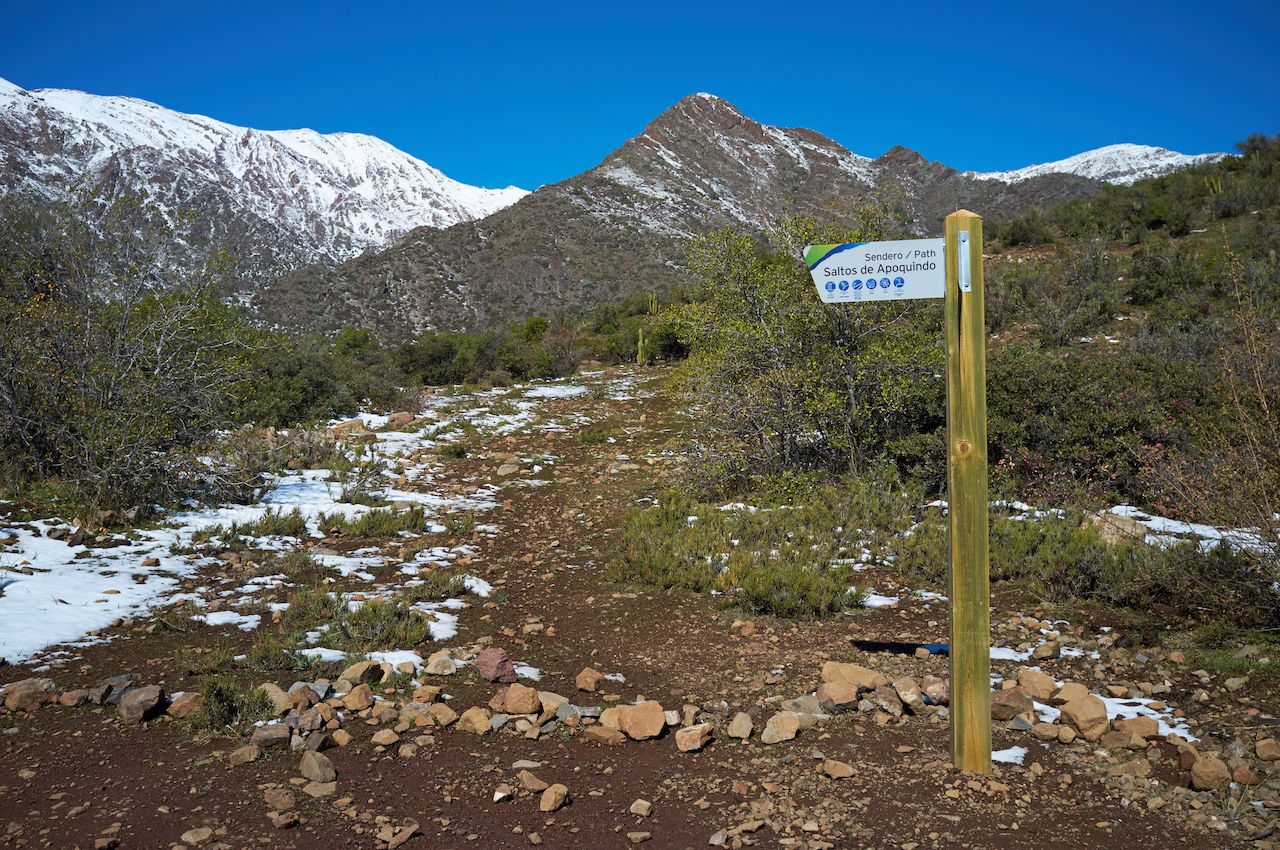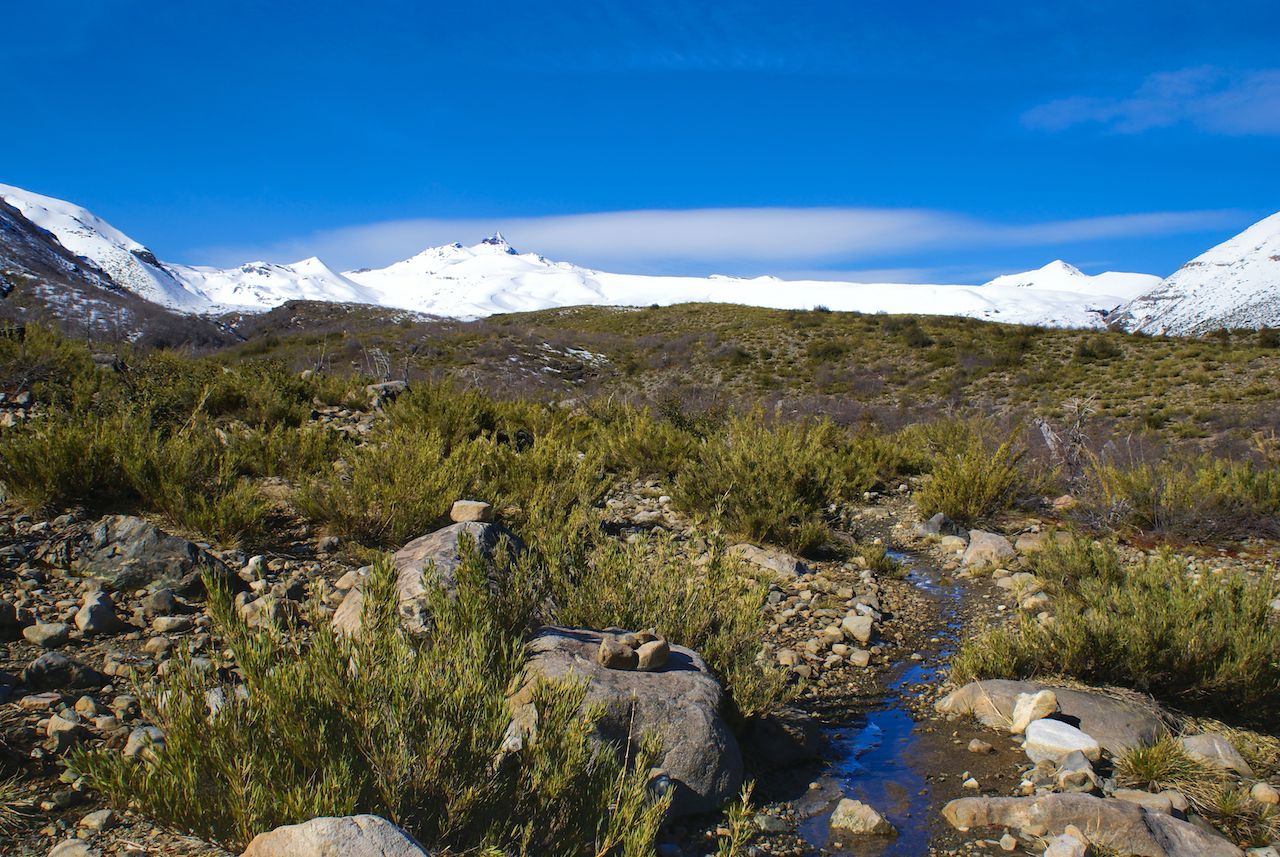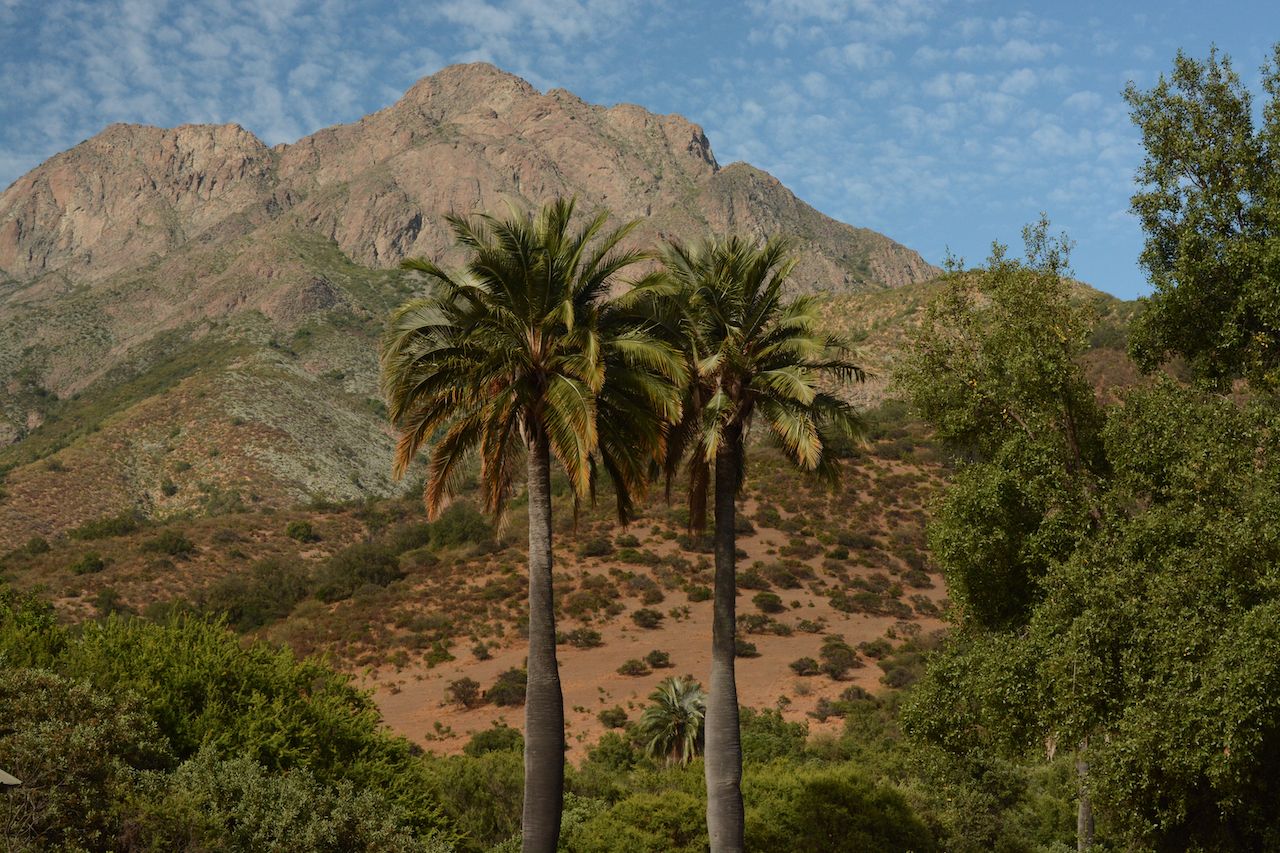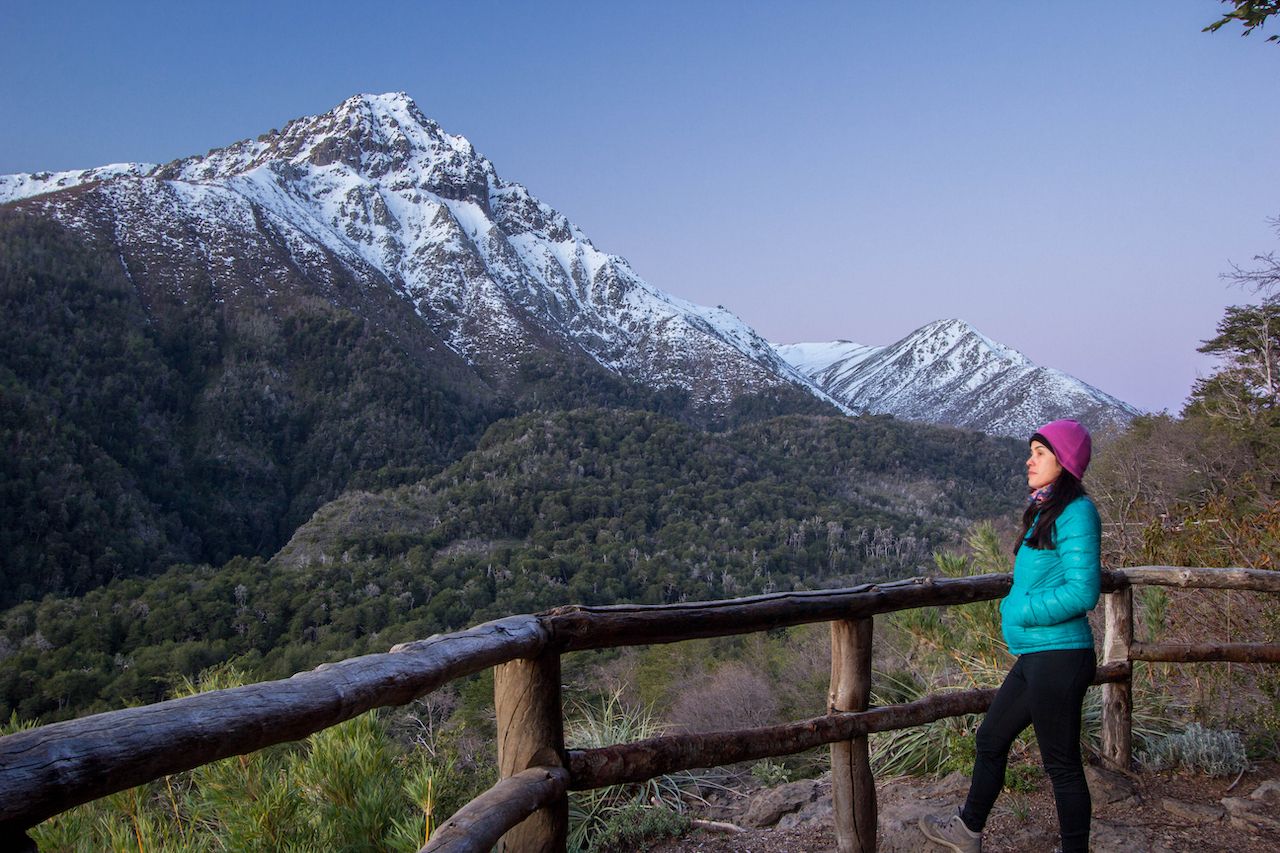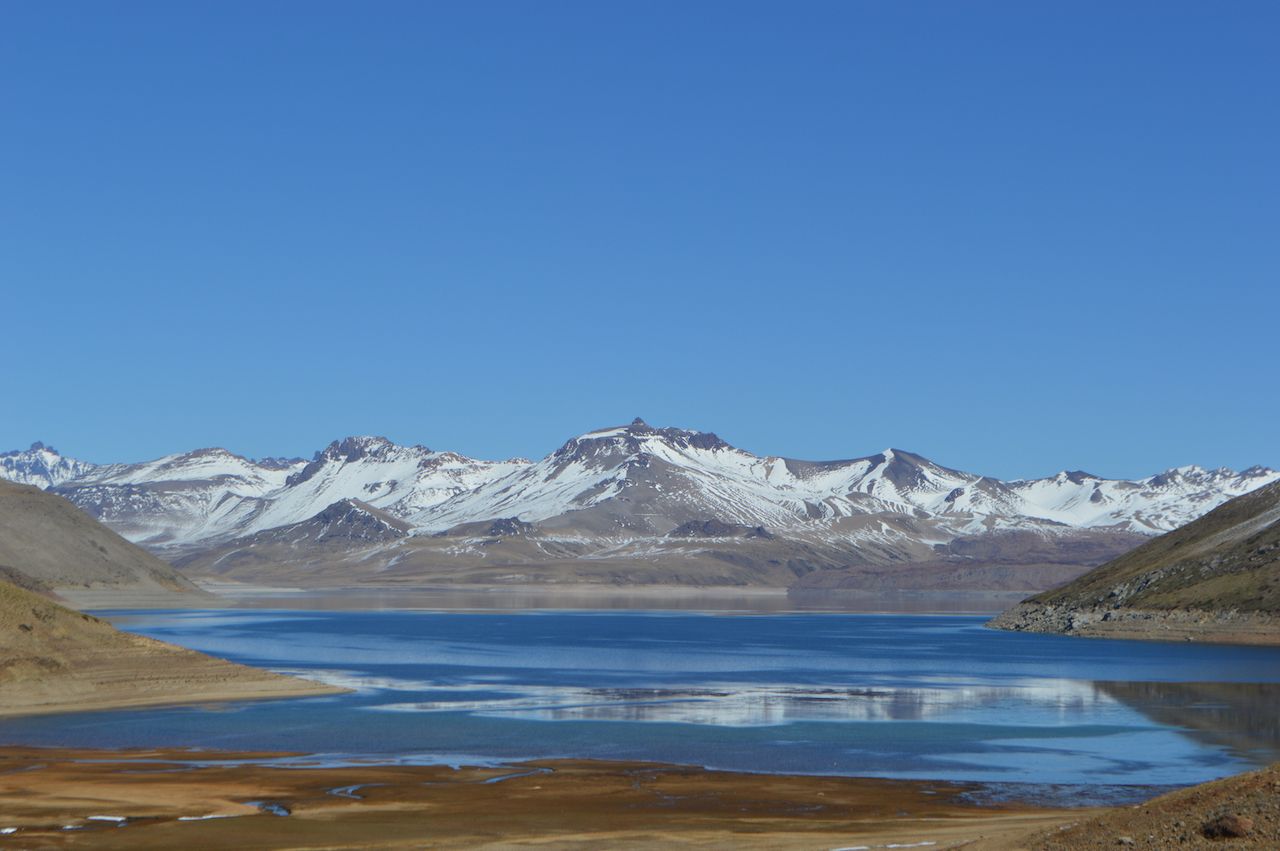Cutting all the way across Chile — a lanky, 2,650-mile stretch of land — lies the Andes mountain range. As such, Chile is a gold mine of hiking spots. You don’t even need to go down to Patagonia to witness glaciers and volcanoes. Place your finger on a map of Chile, and there’s a good chance you’ll land close to one.
Truth is, a lifetime wouldn’t be enough to discover all of the movie-like sceneries hiding in one of South America’s most biodiverse countries. The good news is you don’t have to travel to the country’s extremes to see some of them. You’ll find plenty of hikes near Santiago that lead to rocky valleys or turquoise waterfalls, and are suitable for whatever type of adventurer you are.


